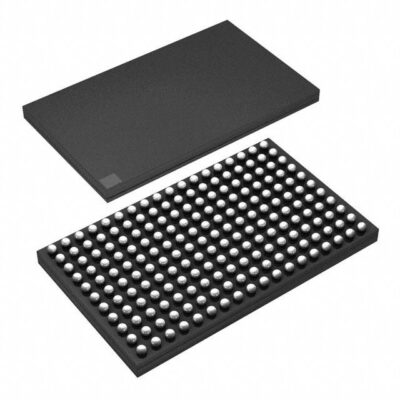ADS52J90ZZE
Part Number: ADS52J90ZZE
Manufacturer: Texas Instruments
Description: IC ADC 14BIT PIPELINED 198NFBGA
Shipped from: Shenzhen/HK Warehouse
Stock Available: Check with us
ICRFQ.com - Electronic Components Distributor in China Since 2003

Part Number: ADS52J90ZZE
Manufacturer: Texas Instruments
Description: IC ADC 14BIT PIPELINED 198NFBGA
Shipped from: Shenzhen/HK Warehouse
Stock Available: Check with us
| Datasheet | |
|---|---|
| Category | Integrated Circuits (ICs) |
| Family | Data Acquisition – Analog to Digital Converters (ADC) |
| Manufacturer | Texas Instruments |
| Series | – |
| Packaging | Tray |
| Part Status | Active |
| Number of Bits | 10, 12, 14 |
| Sampling Rate (Per Second) | 100M |
| Number of Inputs | 8, 16, 32 |
| Input Type | Differential |
| Data Interface | LVDS – Serial |
| Configuration | MUX-ADC |
| Ratio – S/H:ADC | – |
| Number of A/D Converters | 16 |
| Architecture | Pipelined |
| Reference Type | External, Internal |
| Voltage – Supply, Analog | 1.7 V ~ 1.9 V |
| Voltage – Supply, Digital | 1.15 V ~ 1.25 V, 1.7 V ~ 1.9 V |
| Features | Simultaneous Sampling |
| Operating Temperature | -40°C ~ 85°C |
| Package / Case | 198-LFBGA |
| Supplier Device Package | 198-NFBGA (15×9) |
Precision, speed, and efficiency are critical in the field of analog-to-digital conversion. The ADS52J90ZZE is a cutting-edge analog-to-digital converter (ADC) that increases performance while minimizing power consumption. This comprehensive guide will unpack the ADS52J90ZZE’s numerous features, capabilities, and applications, allowing you to maximize its potential for your projects.
The ADS52J90ZZE is a shining example of innovation in the ever-changing world of modern technology. It changes the way analog-to-digital conversion (ADC) is done. This advanced 16-channel ADC not only has high performance but also uses a small amount of power. This starts a new age of accurate, energy-efficient design.
The ADS52J90ZZE is an amazing piece of engineering. It was made with great care to meet the needs of businesses that depend on getting high-quality data. This ADC was made with accuracy in mind. It gives engineers and designers a flexible way to turn analog signals into digital data, making sure that important information is recorded and interpreted correctly.
The importance of ADCs has evolved in an increasingly digital environment. These gadgets serve as a vital link between the analog and digital worlds. They are crucial in a variety of applications, ranging from telecommunications and medical imaging to industrial automation and scientific research. ADCs convert real-world signals such as sound, temperature, voltage, and current into a digital representation, allowing computers and processors to interpret and analyze data with unprecedented precision.
ADCs are now found in practically every aspect of modern life, from consumer devices such as smartphones and digital cameras to complicated systems like radar arrays and medical equipment. As technology advances, so does the desire for better resolutions, faster conversion rates, and improved power efficiency. The ADS52J90ZZE rises to the occasion, providing a sophisticated solution that meets the ever-increasing demands for accuracy and speed in data translation.
The ADS52J90ZZE ADC is a technological marvel with features tailored for modern data acquisition. Here’s a snapshot of its standout characteristics:
Let’s uncover the core dynamics of ADCs:
Explore the diverse operational modes of ADS52J90ZZE ADC:
Practical use: 16-channel for medical monitoring, 8-bit for high-frequency trading. Choose wisely for optimal results.
Efficiency in the use of power is of the utmost importance in the field of data gathering. The ADS52J90ZZE is an analog-to-digital converter (ADC), and it features a novel power scaling function that balances the amount of energy consumed with the conversion rates. An in-depth look at this game-changing trait and the ramifications it has for the design of energy-efficient products is presented here.
A dynamic power scaling mechanism is integrated into the architecture of the ADS52J90ZZE ADC. It gracefully adjusts the amount of power that it consumes dependent on the conversion rate, as opposed to the usual fixed-power solutions that are available. This adaptability not only maximizes the system’s efficiency but also reduces the amount of energy that is wasted.
The power consumption of the ADS52J90ZZE ADC adjusts dynamically in response to changes in the conversion rate. When running at greater conversion rates, the ADC automatically scales up its power, ensuring that adequate resources are given for data gathering that is both precise and quick. On the other hand, when the conversion rate is lower, the amount of power used is reduced, which helps conserve energy without compromising functioning.
The power scaling capability of the ADS52J90ZZE holds profound implications for energy-conscious designs:
The ADS52J90ZZE ADC’s power scaling capabilities exemplify the marriage of innovation and efficiency. It enables engineers to create energy-efficient solutions without sacrificing data acquisition quality by tailoring power consumption to conversion rates. As you begin your design journey, the power scaling feature will be a strategic ally, ensuring that your projects are both precise and sustainable.
If you know a lot about the ADS52J90ZZE ADC, the road ahead is brightly lit. Accept this new information and use it to its fullest to join those who are constantly pushing the limits of accuracy, speed, and effectiveness in the field of analog-to-digital conversion. Your new ideas could change the way industries work, and the ADS52J90ZZE is ready to join you on this exciting journey into the uncharted areas of tomorrow.
Elevate your journey even further by engaging with ICRFQ, the premier source for electrical components in China. With the ADS52J90ZZE ADC, you can start a journey of learning and new ideas. Your next big break is waiting for you, so take it now!
WhatsApp us